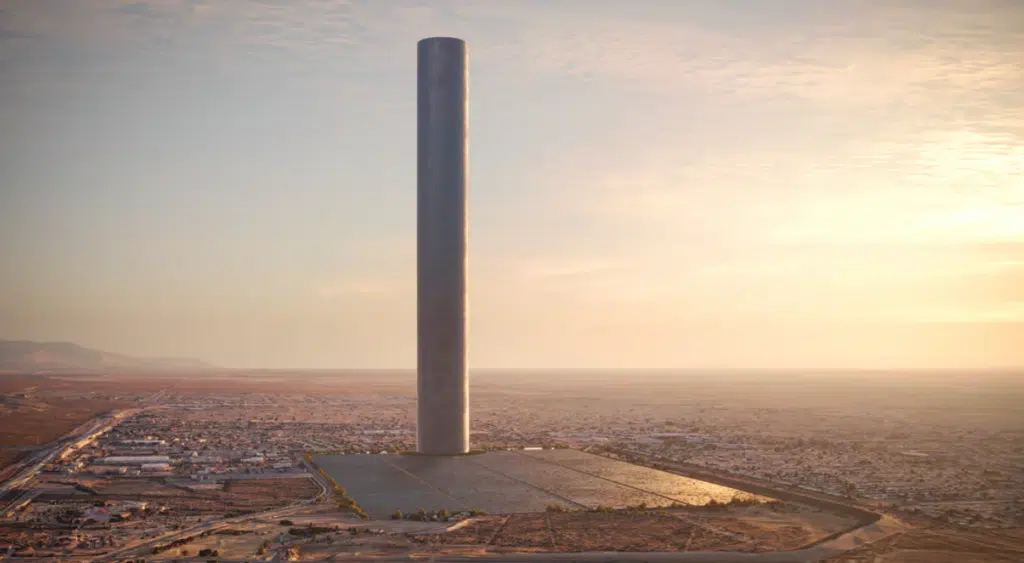Kilometer-tall skyscrapers that double as huge batteries to be created
- The designer of the world’s largest skyscraper has begun work on a new project
- One-kilometer tall skyscrapers that could double up as giant batteries
- The buildings would offer a ‘carbon payback’
Published on Jun 06, 2024 at 12:09 PM (UTC+4)
by Claire Reid
Last updated on Jun 06, 2024 at 4:19 PM (UTC+4)
Edited by
Tom Wood
The designer of the world’s tallest building has partnered with an energy-storage company to look into the possibility of creating kilometer-tall skyscrapers that also work as giant batteries.
Skidmore, Owings & Merril (SOM), the company behind Dubai’s Burj Khalifa, and Energy Vault are looking into ways to turn a building into gravity-based energy storage systems.
One idea being considered is something known as EVu.
This involves using excess energy to raise a weight to the top of the supertall skyscraper, which could then be released and allowed to descend to the bottom – harnessing the force of gravity to power a generator.
READ MORE! The mystery of the world’s tallest abandoned skyscraper that’s still unfinished after 15 years
Skyscrapers will harness ‘innovative design’
A press release from the two companies explains: “EVu is a superstructure tower design, which improves unit economics and enables GESS [gravity energy storage systems] integration into tall buildings through the use of a hollowed structure with heights over 300 meters, and up to 1,000 meters tall.
“These structures will have the capacity to reach multi-GWh of gravity-based energy storage to power not only the building itself but also adjacent buildings’ energy needs.

“This innovative design which integrates leading GESS technology within superstructure building design and engineering will, for the first time in building construction and operation history, enable a carbon payback within accelerated timeframes of 3-4 years.”
Another idea works similarly, but instead of a weight, it would pump water to the top of the building, which could then be released and run turbines.
‘Twice as high, twice the energy’
As well as being eye-catching, the height of the buildings is actually pretty crucial to the plan – because the higher the weights being lifted inside, the more energy they will hold that can be released when electricity is needed.
Bill Baker, a consulting partner at SOM, told Bloomberg: “If I store it twice as high, twice the energy.
“High is better.”
Energy Vault CEO Robert Allen Piconi told the publication that if all goes well, construction on the new skyscrapers could begin as soon as 2026.
Meanwhile, SOM’s Burj Khalifa is set to lose its title as the world’s tallest skyscraper – having held it for 14 years.
Saudi Arabia’s Jeddah Tower, when completed, will rise to a height of 3,281 feet in the sky. For context, Burj Khalifa stands at 2,720 feet.
DISCOVER SBX CARS: The global premium car auction platform powered by Supercar Blondie
Claire Reid is a journalist who hails from the UK but is now living in New Zealand. She began her career after graduating with a degree in Journalism from Liverpool John Moore’s University and has more than a decade of experience, writing for both local newspapers and national news sites. Claire covers a wide variety of topics, with a special focus on cars, technology, planes, cryptocurrency, and luxury.




